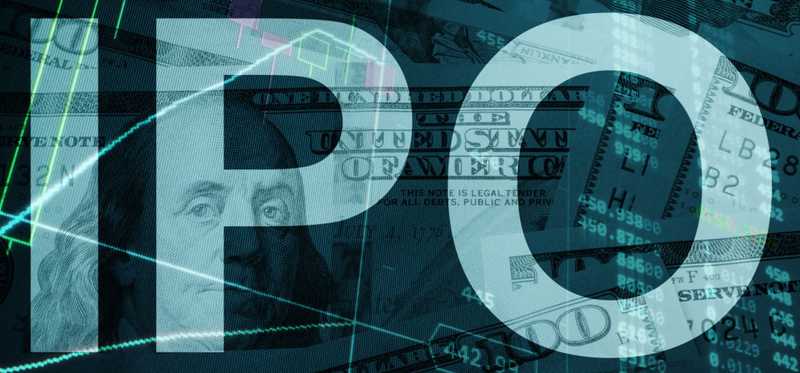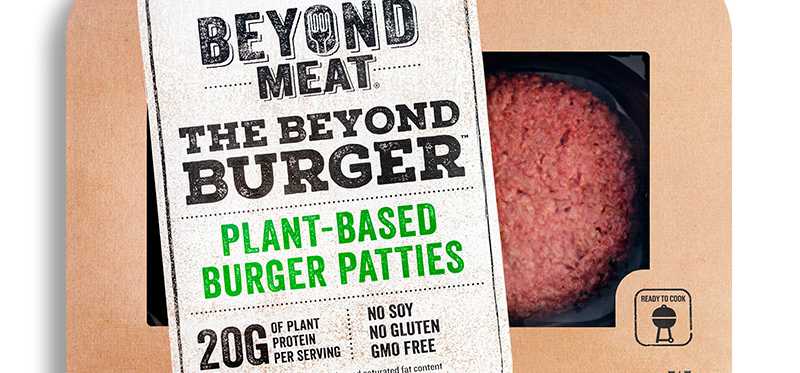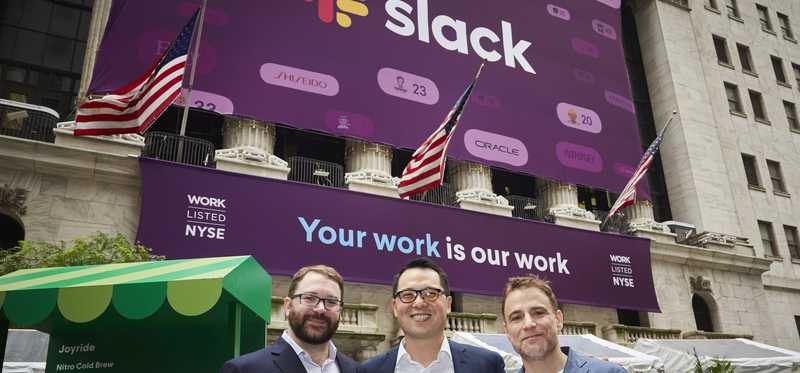Here's How These Big 2019 IPOs Are Doing Now

Here's How These Big 2019 IPOs Are Doing Now
Investing in IPOs is risky business
The IPO, or initial public offering, is the first chance for investors to get shares of promising companies with the hopes of buying into the next big thing. It's important to note that while IPOs occasionally skyrocket in value, most companies struggle in the harsh glare of Wall Street. Numerous studies have confirmed that, on average, the majority of recently public companies tend to trail the broader market in the months and years following their IPO.
2019 has had a bumper crop of newly-minted additions. Let's look at some of the year's most widely-followed market debuts to see how those companies are faring today.
Previous
Next

1. Beyond Meat
The performance of Beyond Meat (NASDAQ: BYND) was beyond believable when it debuted in May. The shares were priced at $25, opened at $46 and never looked back. The stock surged on its first day of trading, and shares are currently fetching north of $150 per share, up over 230% from its opening price and among the best performing IPOs so far this year.
Many believe shares in the plant-based meat company are now wildly overpriced, but that hasn't stopped their torrid ascent. While Beyond Meat is not yet profitable, the company has achieved impressive revenue growth, which increased 443% between 2016 and 2018. Plant-based meat alternatives have soared in popularity and the company has had difficulty "meating" the demand.
Investors should be wary of the beefy valuation, but those with an appetite for risk might consider a serving.
Previous
Next

2. Levi Strauss
Iconic jeans-maker Levi Strauss & Co. (NYSE: LEVI) has been around for 165 years. The company saw its first stint as a public company in 1971, but has been privately-held for the past 34 years. Levi Strauss offered its stock at $17 in March, but the shares jumped out of the gate at $22.22, and is only slightly lower in the weeks since.
The company grew revenue to $5.6 billion in 2018, up 14% year over year, an improvement over its 8% growth in 2017 -- though this is down from its peak of over $7 billion in the 1990s.
Management plans to use the money from its IPO to further its expansion. Apparel customers are a fickle bunch, so investors should keep an eye out to ensure Levi's puts on its big boy pants and executes on its plans.
Previous
Next

3. Slack Technologies
Workplace collaboration and messaging company Slack Technologies (NYSE: WORK), is technically not an IPO, but merits a place on this list. The company chose to bypass the typical IPO and instead opted for the direct public offering (DPO) alternative. This allows insiders and early investors to cash out some of their holdings without the company having to issue new shares, which would dilute the value of their holdings.
Slack began trading in mid-June at $38.50 per share, easily topping the reference price of $26 that was assigned the day before. The stock closed at $38.62 -- essentially ending the day where it started. The stock currently trades just above $36, not straying far from its debut price.
Previous
Next

4. Lyft
Lyft (NASDAQ: Lyft) was the first of two ridesharing companies to debut on the stock market this year. Due to high investor demand, the company increased the number of shares offered and also raised the share price. Management ultimately priced them at $72, at the high end of the revised range. The shares opened at $87.24, but ended the day only modestly higher, at $78.29 -- but the shares are currently trading at about $60, down about 30% from where they initially opened.
The ride-hailing industry will be challenging and none of the players are yet profitable, including Lyft. While its revenue soared 107% to $2.2 billion year over year in 2018, its losses also climbed, topping $911 million, up 32%.
The biggest buy signal for investors will come as Lyft approaches profitability -- though that may still be some time off.
Previous
Next

5. Chewy
Investors had high hopes for Chewy (NYSE: CHWY) when the online pet supplies retailer went public last month. While the company priced its shares at $22, the stock opened at $36 before ending the day slightly lower at $34.99. The shares are currently trading at about $33.
Chewy has generated impressive growth, with sales of $3.5 billion last year, up 75% year over year, having at least doubled each year between 2014 and 2017. This was driven by the company's Autoship feature, which delivers pet supplies to subscribers at selected intervals, and produced $2.3 billion in recurring sales in 2018.
The company is still losing money, but operating losses last year were 7.6% of sales, a considerable improvement from 16.1% of sales in 2017. This shows that if the trend continues, profits are just a dog walk away.
ALSO READ: Chewy Surges in IPO, Showing Demand for E-Commerce and Pet Industry Stocks
Previous
Next

6. Uber
Uber Technologies (NYSE: UBER) was the second ride-hailing company to make its public debut this year. Shares were priced at $45 when the company debuted in May, but stock traded below the level on its very first day, closing at $41.57 and has struggled to get above its issue price in the weeks since and currently trades at about $44.
Its first financial results as a public company were what many expected. Revenue of $3.1 billion grew 20% year over year, while gross bookings grew at a faster rate, up 34% to $14.6 billion. The company had more than $1 billion in operating losses for the first three months of this year -- more than double the amount from the year-ago quarter.
Unfortunately, until Uber makes more progress towards profitability, investors don't want to be taken for a ride.
Previous
Next

7. Zoom Video Communications
Zoom Video Communications (NASDAQ:ZM) lived up to its name after its IPO. Shares priced above the high end of the anticipated range, but even that couldn't keep it from zooming higher. After the price was set at $36, the stock opened at a whopping $65 per share, but ended the day modestly lower at $62. The stock has since soared to over $100 per share, though it's currently trading at about $90.
In the first quarter, Zoom grew revenue to $122 million, up 103% year over year, but more importantly, its already generating a profit. Zoom had net income of $0.2 million for the first quarter, swinging from a net loss of $1.3 million in the prior-year quarter.
Zoom is one of the few profitable stocks in this freshman group, so it's already moved to the head of the class.
Previous
Next

8. Pinterest
Social media site and digital scrapbook Pinterest (NYSE: PINS) is another member of the class of 2019. Strong investor demand encouraged management to price Pinterest shares at $19, above its anticipated range, but the stock stormed out of the gate, opening at $23.75 and ending the day at $24.40. Shares currently trade at about $27.
Revenue grew by 153% between 2016 and 2018, while its user base increased by 127%. This helped push losses from $182 million two years ago to just $63 million to close out 2018, showing a clear path to profits. In the first quarter of 2019, users grew to 291 million active users, up 22% year over year.
With a unique platform and international growth ahead, it's easy to see why investors want to add Pinterest to their digital scrapbook.
Previous
Next

9. PagerDuty
PagerDuty's (NYSE: PD) cloud-based software helps identify problems in an online sales system and quickly notifies the correct technician of the issue, tapping into the massive e-commerce trend. Shares were priced above their initial range as investors were keen to buy stock. Shares were offered at $24, but opened at $36.75, and eventually ended the day 59% above the offering price, at $38.25. The stock is currently priced at more than $46.
The company recorded revenue of $118 million last year, up 48% year over year, while generating losses of about $40 million in each of the past two years. Additionally, its dollar-based retention rate -- or the rate at which existing customers adopt new services -- was 140% in 2018.
Strong growth may help investors overlook PagerDuty's continued losses and complete the sale.
ALSO READ: 1 Hot Newly IPO'd Stock to Buy Today
Previous
Next

10. CrowdStrike
CrowdStrike Holdings (NASDAQ: CRWD), provides cloud-based endpoint security to stop data breaches, using a combination of artificial intelligence and crowdsourcing. The company priced its stock at $34 for its IPO last month -- significantly above its initial range. Shares soared at $63.50 at opening, but ended the day at $58. The stock currently trades north of $67.
Revenue has soared, growing nearly five-fold for CrowdStrike over the past two years. The company is still losing money, and its losses held steady at about $140 million in 2018. What should have investors most excited is the soaring growth in the recurring revenue of subscription customers, which have grown by triple-digits in each of the past three years.
The company's claim to fame is that it discovered the alleged hacking of the Democratic National Committee, giving the company immediate bona fides.
Danny Vena has no position in any of the stocks mentioned. The Motley Fool owns shares of and recommends Zoom Video Communications. The Motley Fool recommends Uber Technologies. The Motley Fool has a disclosure policy.
Previous
Next
Invest Smarter with The Motley Fool
Join Over Half a Million Premium Members Receiving…
- New Stock Picks Each Month
- Detailed Analysis of Companies
- Model Portfolios
- Live Streaming During Market Hours
- And Much More
READ MORE
HOW THE MOTLEY FOOL CAN HELP YOU
-
Premium Investing Guidance
Market beating stocks from our award-winning service
-
The Daily Upside Newsletter
Investment news and high-quality insights delivered straight to your inbox
-
Get Started Investing
You can do it. Successful investing in just a few steps
-
Win at Retirement
Secrets and strategies for the post-work life you want.
-
Find a Broker
Find the right brokerage account for you.
-
Listen to our Podcasts
Hear our experts take on stocks, the market, and how to invest.
Premium Investing Services
Invest better with The Motley Fool. Get stock recommendations, portfolio guidance, and more from The Motley Fool's premium services.